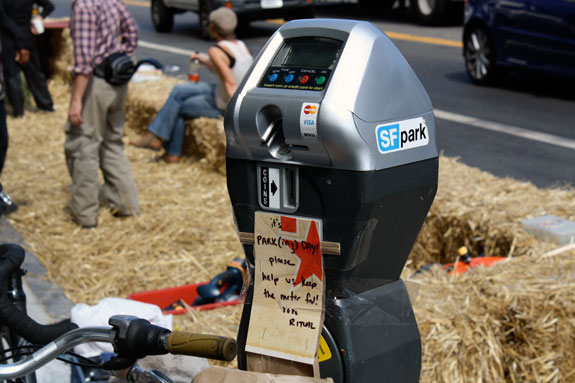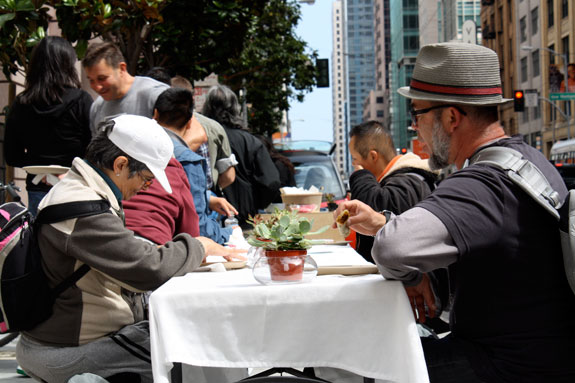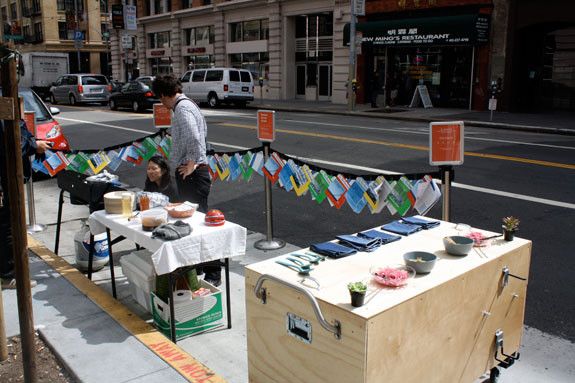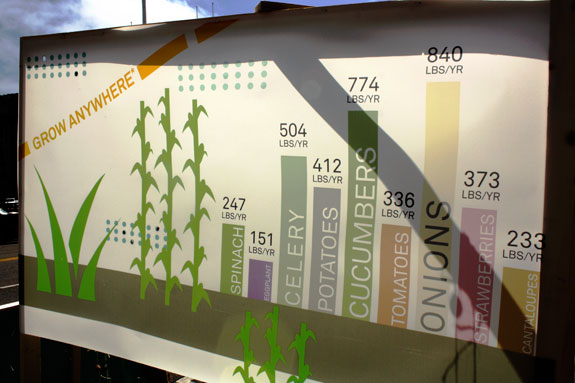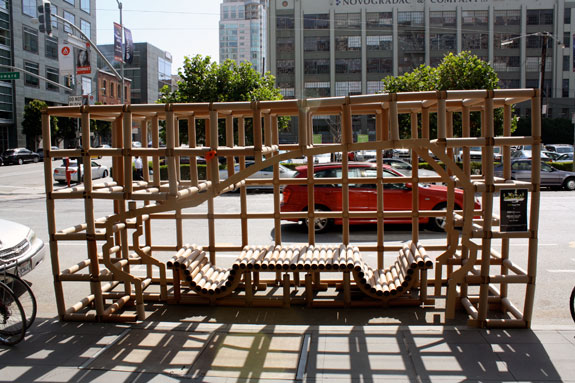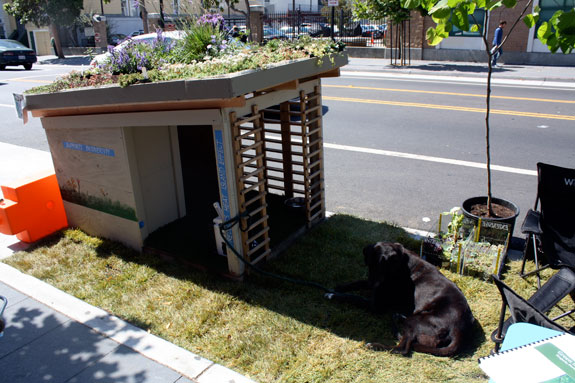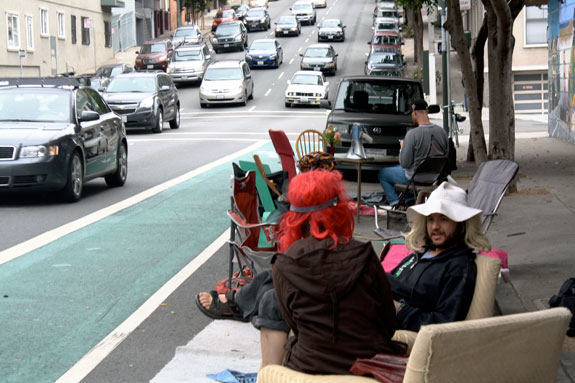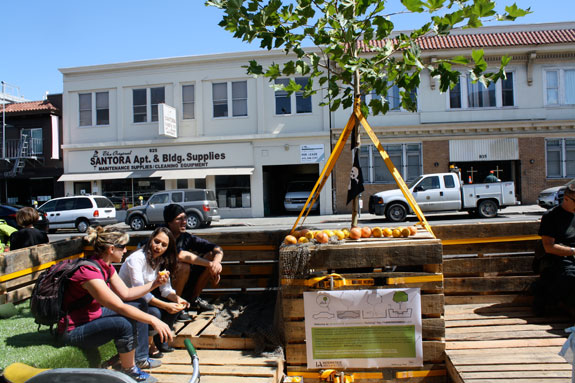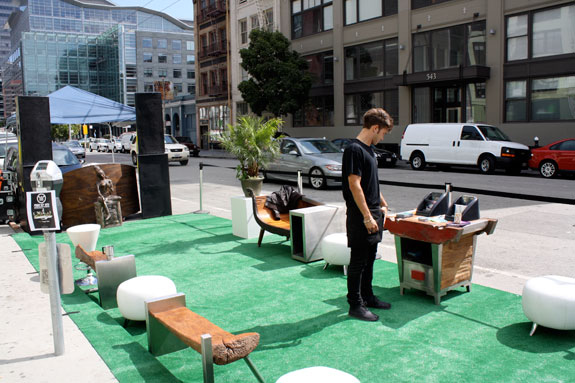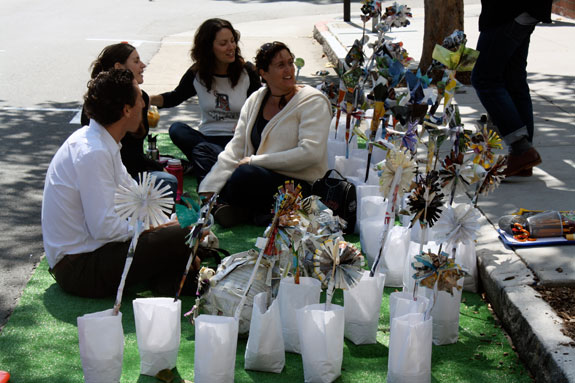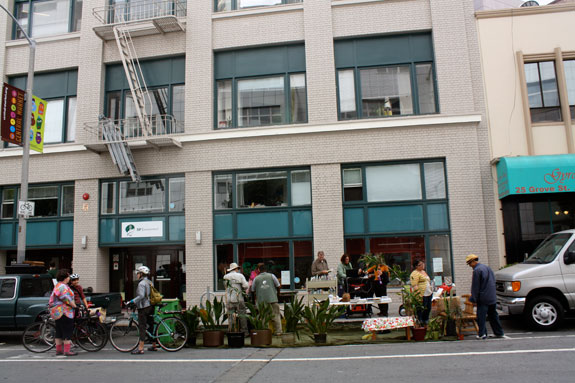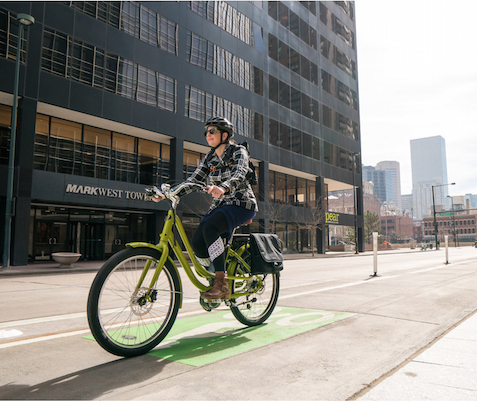PARK(ing) Day 2011 in San Francisco: “Time to Reclaim the Streets”
4:41 PM PDT on September 16, 2011
People all over San Francisco reclaimed metered parking spaces normally reserved for private automobiles today, and transformed them into living spaces for people to mark PARK(ing) Day, one of the most celebrated livable streets events that began here six years ago, and sparked a worldwide movement.
"It's exciting to see how in just a very few years the idea of PARK(ing) Day has gone from a very subversive, radical proposition to something that's routine and mainstream," said Andy Thornley, policy director for the San Francisco Bicycle Coalition, as he unlocked his bike in front of SPUR's temporary park.
Indeed, some of the businesses that have set up temporary parks for PARK(ing) Day over the years now have permanent parklets as part of San Francisco's revolutionary Pavement to Parks and parklet program. What was invented by the renowned artist and design collective Rebar in 2005 is now a San Francisco institution.
Outside the SPUR Urban Center on Mission Street, a line began forming around noon, under sunny skies, for chicken mole, part of a traveling food installation put together by artists Sergio De La Torre and Chris Treggiari. The entire installation -- food, tables, chairs, grill -- was transported via one cargo bike from 17th and Folsom to Mission and 3rd. There were plans to serve 100 people.
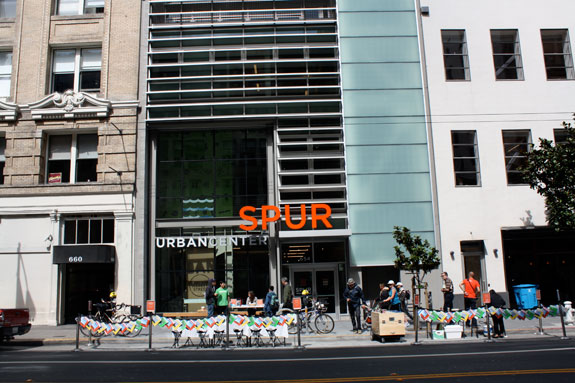
"People sit, people talk, they relate to each other and it's all about the piece," said Treggiari. "I love public art and so my whole practice revolves around me working in the public and bringing my mobile devices into the public. It's great to have this opportunity with SPUR and just to be involved interacting with people."
A few spaces down, hair dresser Mishi Nova, who owns the salon Morphic on Market Street, threw down some sod, and set up a temporary salon. What does PARK(ing) Day mean to her?
"It means renegade do gooding. I believe in PARK(ing) Day as street intervention, and taking back the streets and doing something good for your community," she said. "There's just not enough space for people and it's time to reclaim the streets."
One of the city's most vibrant bicycle corridors, Valencia Street, was lush with temporary parks, as it usually is on PARK(ing) Day. The street is already concentrated with permanent parklets in front of businesses and one residence, most of which sprouted up in the last year.
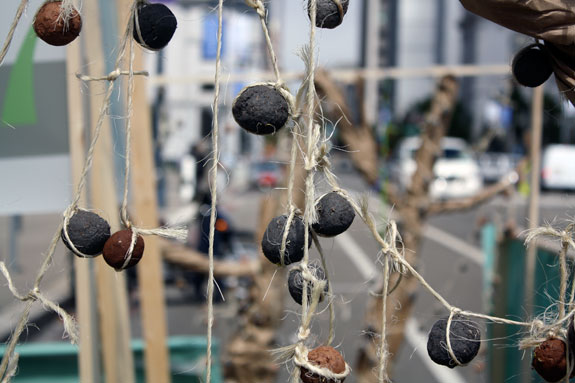
In front of the thrift shop at 910 Valencia, landscape architect James Davidge, working with the Green Roof Alliance, set up an installation to educate the public on green roofing. It was his first time participating in PARK(ing) Day.
"We felt like this was a great opportunity to do a human scale, or dog scale, access to a green roof so that the public can get exposed to something that usually is on top of a roof," said Davidge. "Green roofs are a very effective way of lessening the impact of storm water on a city, especially cities that have combined sewer systems because they retain the storm water and/or delay it."
Inspired by architect Renzo Piano's living roof at the California Academy of Sciences, a green roofing and green infrastructure movement is building in San Francisco, said Davidge.
On Polk Street, outside San Francisco City Hall, the Hayes Valley Farm and design and planning firm Aecom set up an installation filled with seed balls and large graphics to illustrate what a patch of soil the size of one parking space could provide for an urban farmer.
"There's a graph that says 800 pounds of onions a year could be harvested from this space," said Christine Bolghand, a marketer for Aecom.
On Fell Street, along The Wiggle, the Wigg Party took over four parking spaces between Scott and Divisadero, almost an entire block, on the south side behind the green bike lane. It is along this notorious stretch of Fell that the SFMTA hopes to install a cycletrack in the next year, something bike advocates have been pushing for years.
"We chose this spot here on Fell Street, in particular, because this is the beginning of a very contentious section of The Wiggle," said Morgan Fitzgibbons, one of the co-founders of the Wigg Party. "We're hanging out on the street and taking some places that are usually reserved for automobiles and turning them into welcoming, community building centers."
The green bike lane separated people lounging in chairs from one-way arterial traffic, but the temporary park seemed to slow the cars at times, and some drivers honked and gave a thumbs up.
How did you celebrate PARK(ing) Day today? Please let us know in the comments section!
Updated 9 p.m.
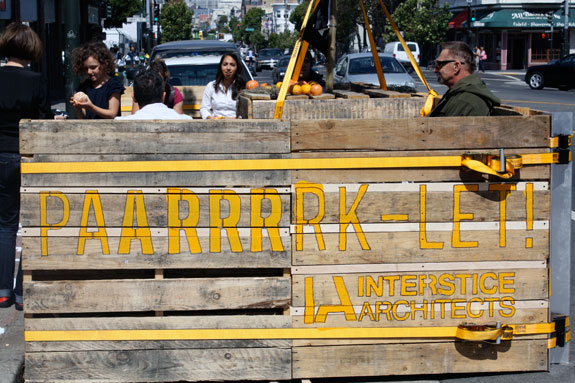
Stay in touch
Sign up for our free newsletter
More from Streetsblog San Francisco
Update on Oakland DOT’s Lakeshore Protected Bike Lane Project
Public seems fairly positive and accepting towards the coming project. Let's hope it stays that way
